In this video @peterfinchgolf shares his best strategy advice to help golfers take fewer shots from three crucial distances of 150, 300 and 450 yards with the help of Shot Scope data.
Golf Monthly created this video as part of a paid partnership with Shot Scope.
► Get your hands on the Shot Scope products featured in this video:
V5 Watch: https://hawk.ly/m/shot-scope-v5-golf-gps-watch/i/golfmonthly-youtube-peter-finch-strategy
Pro X rangefinder: https://hawk.ly/m/shot-scope-pro-x-rangefinder/i/golfmonthly-youtube-peter-finch-strategy
We may earn an affiliate commission when using some of the links in this description.
► This video was filmed on location at Formby Ladies Golf Club. Visit https://formbyladiesgolfclub.co.uk/ for more info.
► Chapters:
Introduction 0:00-0:38
150 yards 0:38
300 yards 6:30
450 yards 12:16
► Become a FREE SUBSCRIBER to Golf Monthly’s YouTube page now – https://www.youtube.com/c/GolfmonthlyCoUkmagazine/videos
► Remember to hit that LIKE button if you enjoyed it 🙂
► Which tip from Pete did you find most useful? Let us know in the comments below! 💬
Watch more on Golf Monthly…
📹 How To Build The Best Set Of Clubs For Your Handicap 👉 https://www.youtube.com/watch?v=5O6HklsXAaY
📹 7 Ways Good Golfers Break 80 👉 https://www.youtube.com/watch?v=AlMq9dNeOio
📹 Follow These Rules To Stop Making Double Bogeys! 👉 https://www.youtube.com/watch?v=21ikAWFKA7g
#golf #golftips #golfer #peterfinch #golfstrategy #golfstats
🎵 Music – licensed by Epidemic Sound 🎵
► Find us on social media:
Instagram – https://www.instagram.com/golfmonthly
TikTok – https://www.tiktok.com/@golfmonthly.com
Facebook – https://www.facebook.com/GolfMonthlyMagazine/
Twitter (X) – https://x.com/GolfMonthly
Now, having a solid strategy and a plan for how you’re going to navigate your way around the golf course is arguably as important as your technique. But don’t take my word for it, Peter Finch. Do golfers overlook the importance of decision-m and course management? Sometimes, yes. But also, golf is a very difficult and hard sport that takes the smartest amongst us and turns us into jibbering wrecks. So, hopefully we can help you out today. Indeed. So, we’re going to try and help golfers take fewer shots from three different distances, 150, 300, and 450 yards with the help from data from Shot Scope to hopefully help you lower your score. So, without further ado, let’s get into it. Right. So, Pete, the first distance we’re talking about is 150 yards. Now, this could be a par three as we’ve got here. It could be an approach into a par four or par five. Yeah. When you’ve got this distance for your next shot, what are the things that you’re thinking about in terms of making sure you hit the right distance and getting it as close to the flag as possible? Uh, first thing I think about probably is what I’m going to have for my tea. Um, kind of what I look like that morning. Um, trying to get over a intimate feeling of self-loathing about myself. And then once I’m past that, then it’s all about club selection. Yes. uh you know it’s an important process to go through. So with 150 yards I think one of the most common issues that I see certainly with golfers coaching on the course is a vast overestimating of how far they hit the ball. So I think a driving range for example you could be there hitting an AI and it’s going around the 150 sign. We’re outdoors there’s different conditions here. We’re off grass. Usually golfers hit the ball a lot shorter than they say, which is why getting like something like a short scope and actually tracking your stats. It can be very eye opening how far you actually hit golf club. So that’s the first thing. Club selection hugely hugely important. Then we just spoke about conditions. So today we got the wind into off the right hand side. If you’re going to play a little draw with that, it’s going to be lessened but not as much. If you try and hear fade into that, it’s going to take even more distance off. And then you want to be looking at the hazards. We got a big bunker short right here. For me, ladies, that is deep. You know, that is going down into the very depths of hell. So, you don’t want to be in there. You want to make sure you get over. So, if you are in two minds like, oh, you know, is a nine going to be enough? Do I need to hit an eight iron? Hit the longer club. Hit the longer club. Yeah. And if you look at the data uh from Shotcape, it tells us that an average golfer, so 15 handicapper averages 92 feet proximity away from the hole. Yeah. With a 7, which is their most common club. So then if if you go down the handicap scale, as people get better, their proximity reduces. So would you say it’s it’s a combination of having a bit more speed allows you to hit less club, but then also strike as well? I mean I mean more speed uh usually means more distance, but that usually means more loft. If you hit more loft, it’s more forgiving. It’s just as simple as that. Loft equals forgiveness. But if you want to work on overall speed, the fact is that if you hit your driver further, you’re going to have less distance in as well. So, it’s all, you know, part of the same cycle. Um, but again, it depends on swing speed is an interesting one because generally if a golfer tries to hit an eight iron harder, their strike will decrease as far as their consistency is concerned. Yeah. If they hit a seven iron and swing a little bit easier, their strike consistency will probably increase and they’ll get the distance that they want. So that’s probably the the main thing that I see with ally delving into, you know, an individual technique. So quality of contact is obviously really important. How do you go about or how would you about coaching someone to improve the quality of contact over, you know, mid-range shot of this distance from a nice fairway lie? What are the keys that people need to take away from this video? Well, I mean, firstly, it’d be like an assessment lesson. then I’d probably sell them onto a package worth about 250 to 300 quid. Um, I’d probably string them along for a series of weeks before selling them another one. Uh, but if they were after a medium, a slightly quicker fix, um, we want to be trying to ensure low point control. I mean, with with irons especially, you want to be hitting the ball first. You want to be making ground contact after. So, that’s where you kind of take your divot. Now again, it’s a very difficult thing to coach because everyone has different swings and all the rest of it. A real simple one that you can do, a super super simple test is you can do this on the course or you can do this at the range. If you just take a tea, I’m going to tee this ball up. So, we are on a par three here, but I’m going to take a separate tea and I’m just going to place it about a couple of inches in front of the ball. Now, what my goal here is not to hit the ball. My goal here is to strike the T which is in front of the ball. Now, what that allows me to do is very quickly try and shift the low point of my arc ahead of the ball. So, if I hit the second T, I should hit the ball with a downward descending angle of attack. And that leads me to be able to control loft a lot more, which is absolutely key if you want to get the appropriate distance out of your irions and you want to control trajectory. So, it’s a very simple drill to use. And you’re going to ask me to do it now, aren’t you? Well, I was going to say, so do amateurs tend to when they’re doing it wrong, they tend to not be hitting the ball with a descending blow. I mean, when a ball is especially when a ball is on the turf, the reaction of a lot of golfers is to try and lean back and try and help the golf ball in the air. With this drill, the reason it’s good is cuz it gives direct feedback. Like if you clip the ball cleanly off the tea and you don’t hit the second one, you know that you’ve not struck down properly. It’s just an instantaneous way of feedback. Well, let’s see it then. You you’ve taught the torque here. So, obviously with this particular shot, you’re only focusing on really trying to hit that tee after the ball. Yeah. So, I’ve got an A here. It’s kind of strongly into wind. It should be enough to get over, but all my goal is here is to try and take a divot, try and clip the second T. like you’ve definitely taken a divot and it’s curling back nicely just right at the pin. Lovely shot. So there you go. If you struggle from this distance or you want to reduce your proximity to the hole from 150 yards, follow Pete’s tips. Try that drill and you’ll be hitting the ball close in no time. [Music] Right, Pete? We’re moving up in distance. We are now 300 yd away. We’re on the 17th hole here at Formbby Ladies Golf Club. It is a driveable par 4 for some. Yes, but not all. Yeah, I mean I think with any hole of this distance, if you can have the ability to go for the green, you probably should. I mean, stats wise is pretty simple. The closer to the green that you get, even if you’re in the roof, you’ve got a better chance of getting up and down. It’s as simple as that. The only complications really come in as far as around danger. You know, if you’re if you got a green at 300 yards, but it’s surrounded by a leg, it’s probably better to lay up. the opportunity where you’re aiming. Are you shaping the ball a certain way? So, I mean course strategy is also dependent on course knowledge. So, as you look down this hole, you can see there’s gor off to the left of the green. Obviously, you don’t want to be going in that. You’re not going to find your ball. But you can see from here that there’s gor and heather to the right of the green. Now I know because I’ve played here before that that gors and heather stops at about 250 yards and after it at this time of year it is quite low. So I can take aim over the right hand side of this hole over the gor over the roof almost towards the 18th t. And I know that if the wind brings it back it’s going to be getting near the green but even if it stays straight I’m actually just going to have a chip across. Yeah. So if I can manage to get it in that space, there’s no danger. So you’re min minimizing the risk of finding bunkers, gor penalty areas, that sort of thing. Yeah. But even like even I’d rather be in a bunker 10 yard away from the green than 160 yards away in the fairway. Absolutely. That makes sense. But what if for amateur golfers, you know, mid to high handicappers who don’t have the ability to reach the green? Yeah. What should their approach be? I mean, if you don’t have the ability to reach the green, but you are confident with the driver, there’s no reason why you shouldn’t still hit that. Again, closer the better, but then you need to take into account what the hazards are. So, there’s a bunker out here. It’s about 180 yards off the tea. And then the next bunker after that is by the green. So, you do have this large patch of grass where you can land the golf. I mean, the the obvious way to do it is to just try and think back from the hole. So, I’ve got 300 y. I know if I hit a 200 yard shot, it’s in the fairway, I’m going to have a 100 yard pitch. That’s a very comfortable number for me because then that decides almost what the club is going to be off the tea. Like if you want to leave yourself 100 yards, okay, do the calculation. I’m terrible at maths, but I’ll ask one of my playing partners. Okay, I need to hit something 200 yards. Okay, but in terms of driver technique, if you were going to hit driver or or people were going to hit driver, what are the the key things people really need to focus on? Um, I mean, setupwise between the driver and the iron, if you’re going to lay up a go for it, is obviously different. Um, on the previous hole, as far as 150 yards, we have a drill as far as striking down. With the driver, you want to be striking up. So, for that, we just want to be making sure that we’re getting set up appropriately. So, my line is going to be to the right of this hole. I’m going to got mark just over the gore. So, I’m going to start with my feet together. I’m going to take a little fat out with my lead foot. I’m going to take a big step with my trail foot. And I know that that puts this ball position pretty much just inside of the lead foot. Now, from there, I’ve got a little bit of spine tilt naturally as my right hand goes down. So, the center of my chest is after the ball. Now, on the previous hole, we spoke about how we want to be kind of covering the ball, hitting the ball first and then a divot. With the driver, we want the chest to be staying just slightly behind the ball. If we can do that, then we can strike up and actually optimize launch. Yeah, which again for the right to left wind here, this should help. It’s a little bit into that. I’m not entirely sure I’ll be able to get there today, but well, let’s give it a go. [Music] Now, I take it all back. I do actually forget sometimes I’m not a terrible golfer. Yeah, that’s on that’s on the green. It might actually be tracking pretty close to the That’s actually to go and see how close. Oh yeah, that’s just literally just run off the back of the ground. Great. A great shot nonetheless. But just quickly, so if you are if golfers are playing it safe, maybe they’re more confident with an iron. Obviously they’re taking the the trouble out of play. What briefly tips especially long irons in particular because they can be quite hard to hit, can’t they? So I want to try and play an accurate shot here and I know that I have a four is going to be able to carry this first bunker with the wind hard off the right. I’m actually going to try and play the shape of the hole. Visually, that’s easier for me. Like, you don’t have to you if you ignore everything. You just think about the ball flying through the air. You can land it wherever you want. But with this particular hole, a little bit left to right, I feel I can start the ball quite central and just hold it against the wind. Now, ball position wise, it’s going to be further back with a long iron, but actually technique-wise, it’s going to be quite similar to the last hole. So, I’m going to take that little step with the left. I’m going to take a slightly bigger step with the right. So the ball position is just forward of center. My alignment here is down the center of the fairway and I’m just going to try and play a fade back into the wind. Perfect. So what happens now is the wind holds that up. So it’s not going to go too far right. It’s definitely not going to go off to the left hand side. And I’ve just left myself in the fairway with a pitch. There you go. So two different approaches there. Generally speaking, you’re better off being as far down the hole as you can from 300 yd. As long as you’re staying out of those penalty areas, bunkers, it should help your score come down. Hello, Pete. We meet again. Hello. We are now 450 yards away, which is a pretty long path for by anyone’s standards. Um, now we know looking at the shots scope data that you are better off statistically to hit driver. Yes. But is there some nuance to it depending on the situation and also the type of hazards that lay ahead at a particular driving distance for you? I mean I think as a general rule like you said if you can hit driver you should hit driver but the mitigating factors are of course if you are for example an awful driver of the golf ball and you’re not confident you might be better off obviously laying back you hitting an iron hitting three whatever it may be. So we do have to say that we do have to understand you got to put the work in to become a good driver. Also the types of hazards and the types of hole that you’re on have a huge effect. So on this hole for example here for me ladies it’s a relatively wide fairway but then either side of the fairway there isn’t any roof. It’s just into the heather. Now heather absolute nightmare to get out of down there about 270 yards there’s a gor bush as well that’s in play. Then further beyond that about 310 which is probably reachable today there’s a fairway bunker. So all of these things need to be taken into account. And of course with if you’re a handicap golfer just because it’s a long hole of 450 yards and it’s got a par four marks on the card doesn’t mean you have to play it like that. You can play it like a par five. You can break it down and try and play it as a par five rather than a par four. Then all of a sudden it makes it easy to say, “Okay, well I’m going to lay up off the tea and then I’m going to hit a second short the green. I’m going to wedge on and try and make a five the old fashioned way.” But also a really kind of useful tip to have and this is great if you’re kind of trying to reduce your handicap. If you go through the scorecard before you go out and play and let’s say you are off 15, just put a mark next to the 1 to 15 stroke indexes. Add a shot on to those holes. So if it’s a long par three for example, stroking X13, play it as a par four in your head. And there all of a sudden things become a lot easier, a lot more manageable. So rather than like chasing an expected score, you give yourself a little bit of a buffer. Yeah. And you’re way less likely to go into bunkers or penalty areas if you’re hitting less club, more loft. Should give you a bit more control. Right. Exactly. Yeah. I mean, when you’re trying to avoid hazards, it’s all about if you get a bogey on this hole, it’s fine. If you get treble bogey on this hole, it’s more of an issue. So, if you can plot your way around all these troubles, it’s going to be a huge benefit. Taking the big numbers off the card, right? Yeah. Yeah. Yeah. And is there I mean, I’ve got the the Shot Scope G6 watch here, which is great cuz it gives you whole maps and aerial views of what lies ahead. Is that something that people could find useful in that regard? I would say that if you’re a golfer who just wants to know about hazards and you want general distances like front, middle, back, a watch is a way to go rather than a laser. lasers. I use both on the golf course, but I think a watch is so so useful cuz you can just have a very quick look. You can understand what’s out there at a glance and then you can plan a strategy from there. Yeah. Well, we already talked about the fact that for most golfers, driver is the best play. So, should we see you hit one here um on this beautiful hole? I never hit driver on this hole, by the way. But I always just hit a like this. I’m going to have to start this on the right heather. Let the wind bring it back. Let’s hope it does. Wind’s just pushing it left a bit. Yeah, but you’re out of the heather and you you’ll be able to find that one. Yeah, it’s actually not the end of the world down there. So, what would be your sort of key takeaways from this distance for golfers who really struggle from 450 yards? So, if you want to improve, you want to get better, you’re going to have to improve your distance. It’s as simple as that. Like driving is the key. If you’re a good driver of the golf ball, it opens up a whole avenue of possibilities. It’s why so many people talk about now when they’re starting kids in the game, starting from the tea and going down the hole rather than starting from the green coming back. Because if you can develop distance at a young age and you can develop distance, you can then control that. Speed is important. But then if you don’t have that, then yeah, you’re going to have to fall back on strategy. You’re going to have to accept that you might not be able to smash a driver everywhere. There you go. So, there you have it. I hope you found that useful. Pete, did you enjoy that? Indeed, I did, mate. Installing wisdom to the golfing masses is one I did. We try our best. Um, if you did like it, make sure you click the like button down below. Comment which tip was the most useful you go and try out on the golf course. If you do like the look of any of the Shot Scope products featured in this video, I’ve put some handy links in the description below so you can get your hands on those. But for myself and Pete Fred here at Forby Ladies Golf Club, it’s goodbye from us. We’ll see you next time.

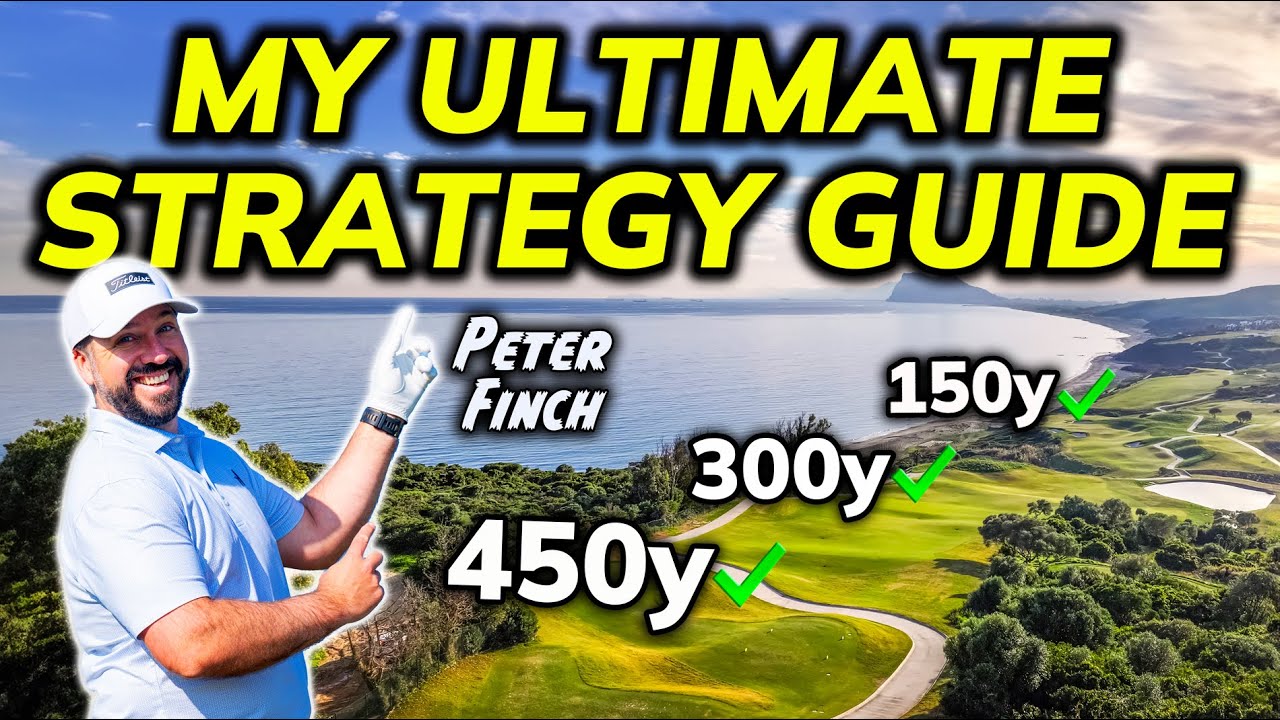
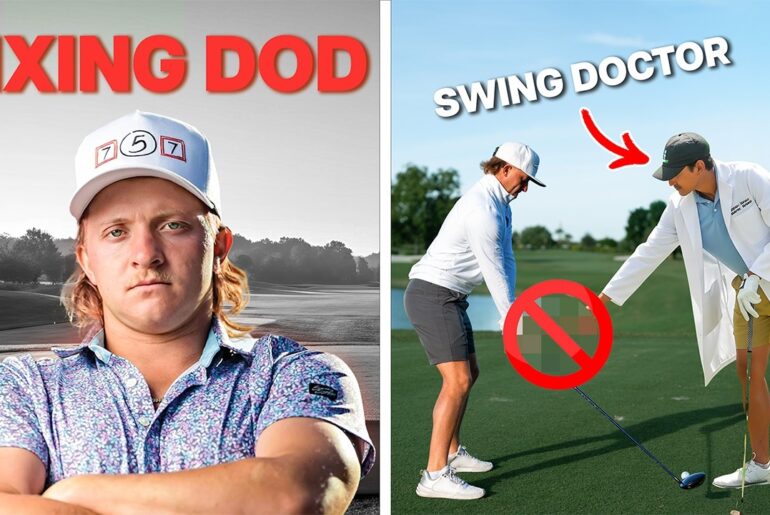
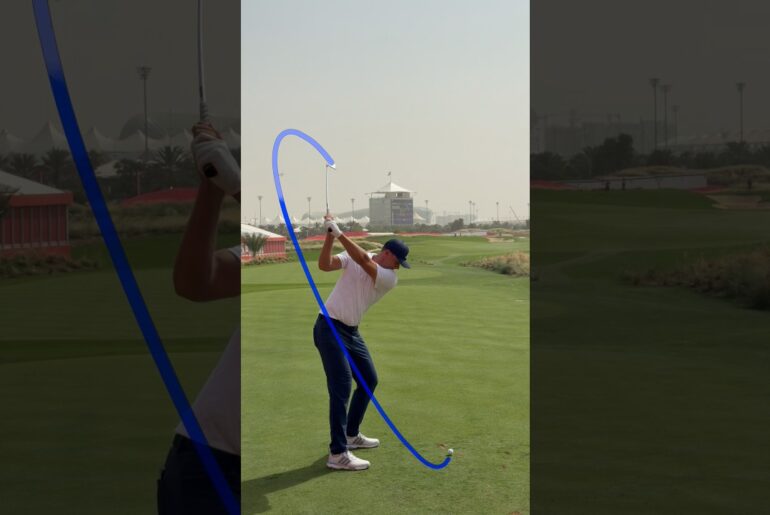
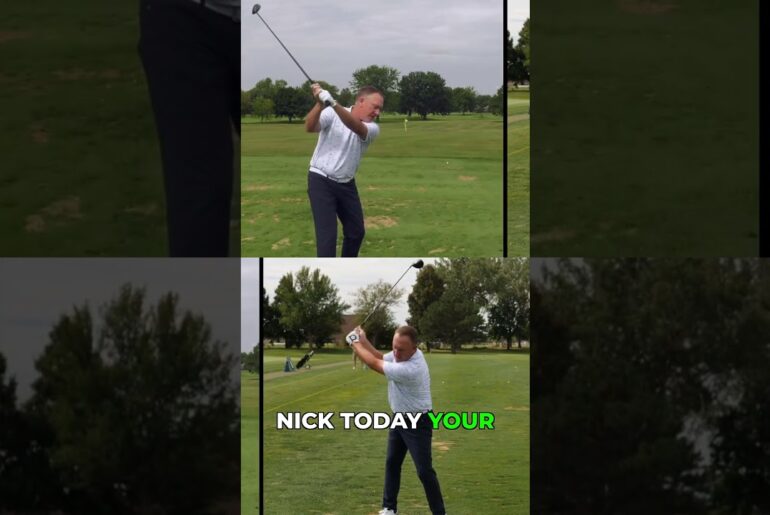
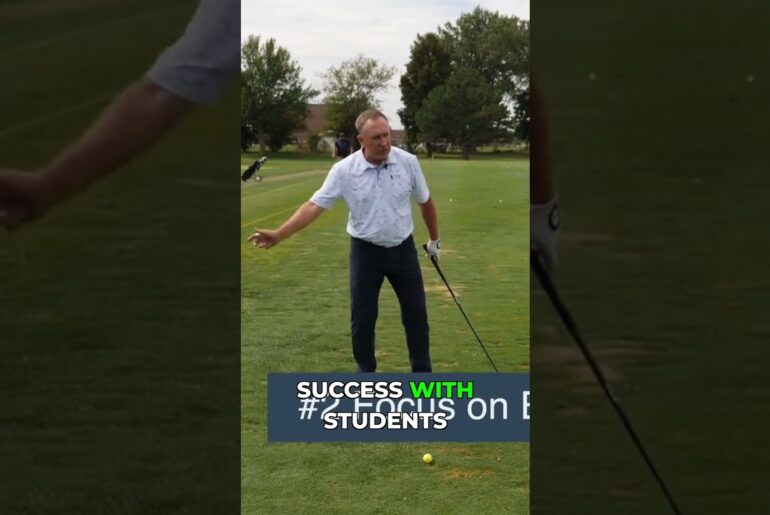

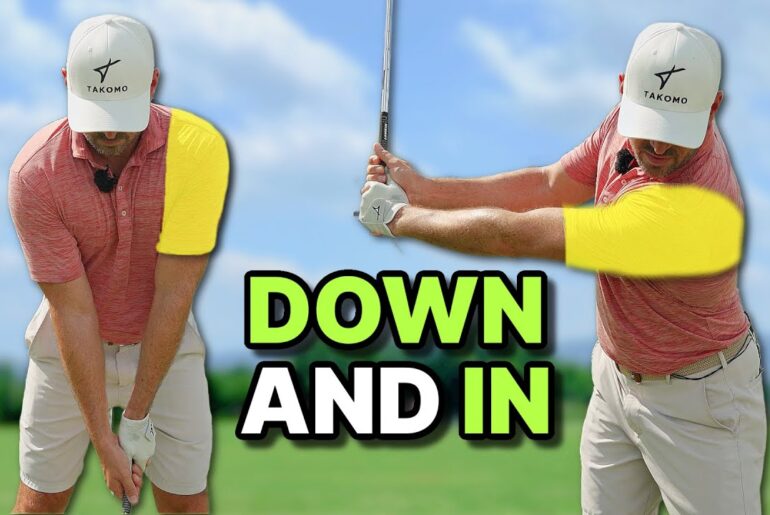
7 Comments
Pete was on one for this video 😂
14:05 Great tip on using the stroke index. I previously had no idea how i could use that info to get better.
I think Pete was possessed by the ghost of Eric Morecambe, you could see the glint in his eyes before answering with some devilish quips!
The dude that holds his finish even when he shanks it 😅 that's what I call a "inflated ego , look at me golfer "
I got paired up with a 20 yr-old female golfer in Scotland. She shot 73 from 6600 yds. I asked her how far she hit a 7i and she said that she had no idea since every 7i was a different shot, how far do you want me to hit it?
I always enjoy Pete's words of wisdom.
Great tips and some good comedy. 😊